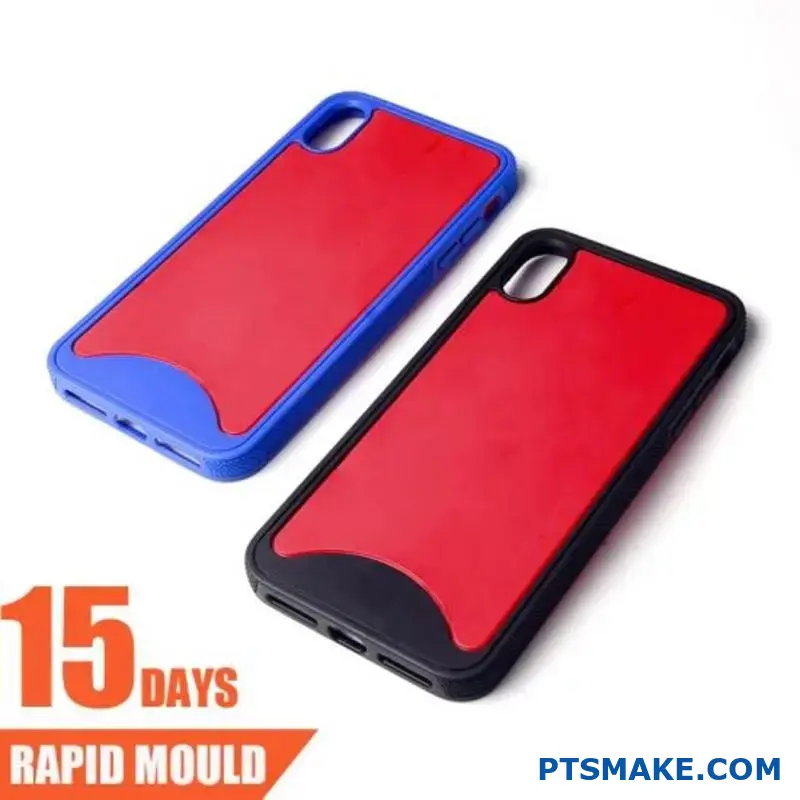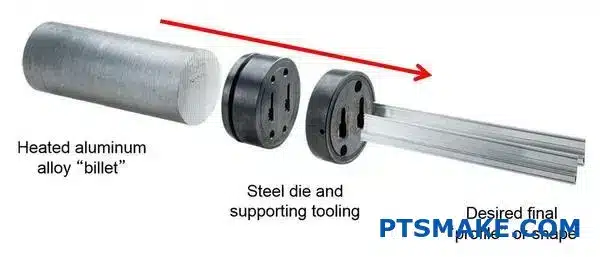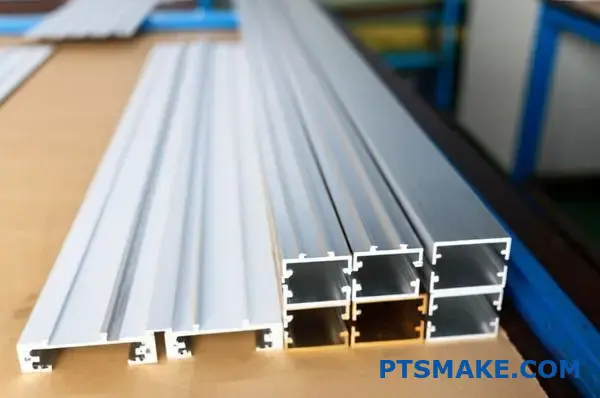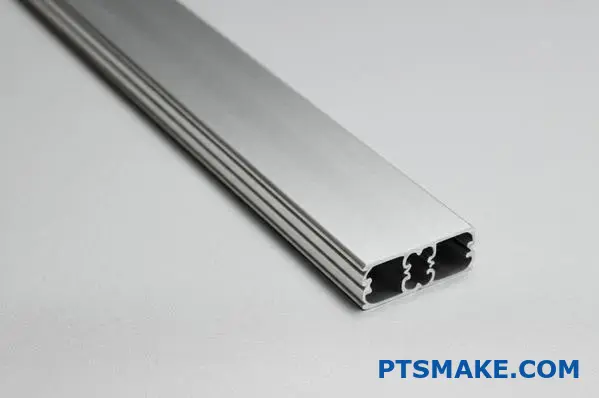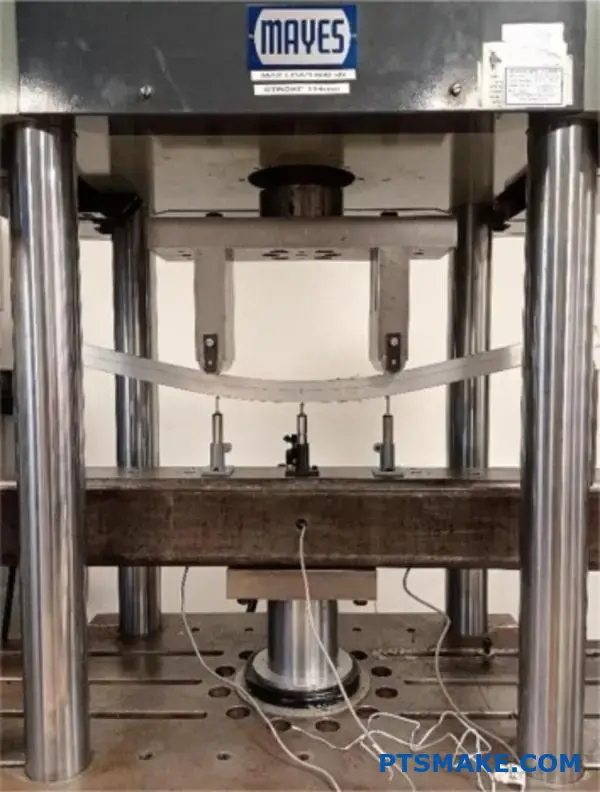Ever tried to find a manufacturer for precision metal parts, only to be overwhelmed by confusing terminology and processes? The world of metal fabrication is filled with complex options, making it difficult to determine which method is right for your project.
Metal CNC machining is a subtractive manufacturing process that uses computer-controlled machines to remove material from metal workpieces. It creates precise parts by following digital designs, offering high accuracy for industries ranging from aerospace to consumer products.
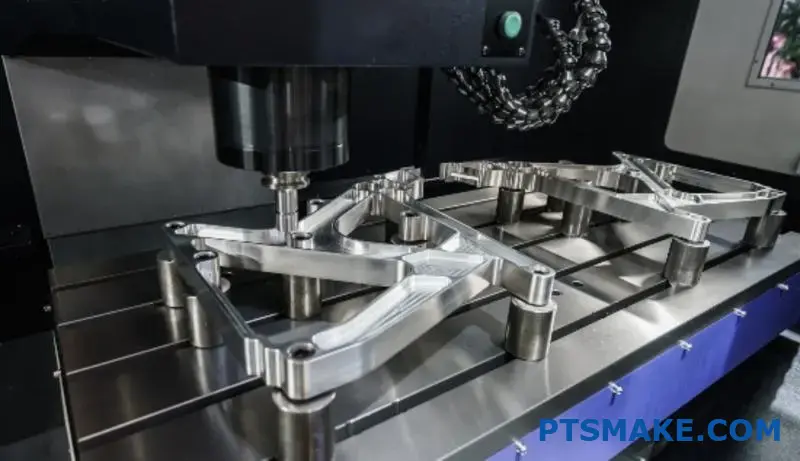
I’ve watched many clients struggle with understanding metal CNC machining before coming to PTSMAKE. Let me clear things up for you. This process is fundamental to modern manufacturing because it combines precision with versatility. Whether you need a single prototype or thousands of identical parts, CNC machining delivers consistent quality that’s hard to match with other methods. Let’s explore what makes this technology so valuable for your projects.
Which Country Is Best For CNC Machining?
Have you ever struggled to decide where to source your CNC machined parts? Perhaps you’ve received vastly different quotes from manufacturers in China, Germany, and the USA, leaving you wondering which country truly offers the best value for your specific needs?
The best country for CNC machining depends on your specific priorities. China excels in cost-effectiveness and production capacity, Germany offers superior precision and engineering expertise, while the USA provides excellent quality with faster delivery for domestic projects. Each offers distinct advantages based on your budget, quality requirements, and timeline.
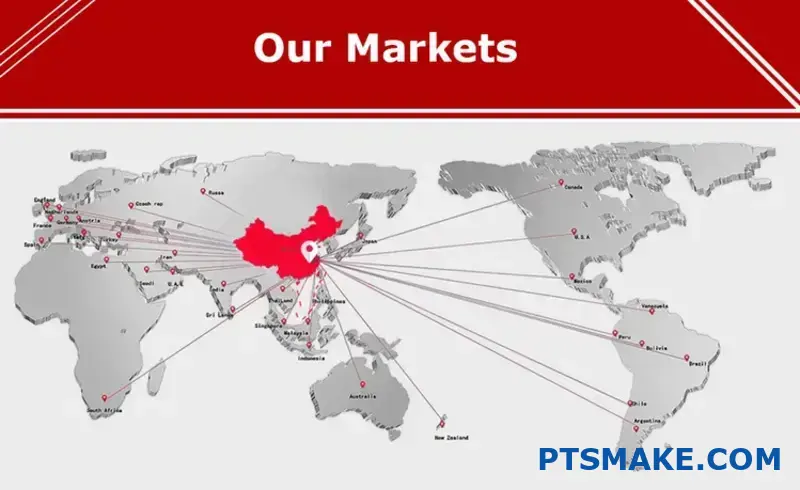
Key Factors to Consider When Choosing a CNC Machining Country
When selecting the ideal country for CNC machining services, several factors come into play. Based on my experience working with manufacturers across multiple countries, I’ve identified the most critical considerations.
Cost Comparison
Cost remains one of the most significant factors in manufacturing decisions. However, the landscape has changed substantially in recent years:
| Country | Average Hourly Labor Rate | Material Cost Factor | Shipping Cost to US/EU |
|---|---|---|---|
| China | $5-15 | 0.8x | High |
| Germany | $40-65 | 1.2x | Medium (to EU) |
| USA | $35-60 | 1.0x | Low (domestic) |
| Japan | $35-55 | 1.3x | High |
| India | $3-10 | 0.9x | High |
While China has traditionally dominated in cost-effectiveness, the gap has narrowed. Rising labor costs in China, combined with increasing shipping costs and potential tariffs1, have reduced the once-dramatic price advantage. That said, for high-volume production runs, China still typically offers the most competitive total cost.
Quality and Precision Standards
When it comes to precision and quality control, significant variations exist between countries:
Germany
German manufacturing is renowned for meticulous engineering standards and exceptional precision. Their machines often maintain tolerances of ±0.005mm, which is ideal for high-precision components in aerospace, automotive, and medical applications. The German approach to quality usually involves comprehensive documentation and rigorous quality control systems.
China
The quality of Chinese CNC machining has improved dramatically over the past decade. At PTSMAKE, we’ve invested heavily in Swiss and Japanese equipment to achieve tolerances of ±0.01mm for most applications. However, quality can vary significantly between manufacturers. Finding a reliable partner with proper quality systems is essential.
United States
American CNC manufacturers typically offer high-quality production with excellent consistency. They often excel in prototyping and specialized applications requiring tight tolerances. The US advantage lies in the combination of quality control systems and a problem-solving approach to manufacturing challenges.
Delivery Time and Logistics
Time-to-market considerations often outweigh pure cost factors:
- China: Production lead times of 2-4 weeks, but shipping can add 3-5 weeks for sea freight to North America or Europe
- Germany: Typically 1-3 weeks production, with 3-7 days shipping to European destinations
- USA: Often 1-3 weeks production with 2-5 days domestic shipping
For urgent projects where components are needed quickly, domestic or regional manufacturing usually makes more sense despite potential higher costs. However, with proper planning, Chinese manufacturing can still provide excellent value even with longer lead times.
Material Availability and Specialization
Each manufacturing region has developed specializations based on local industries:
- China: Excellent for aluminum, stainless steel, brass, and most common industrial materials
- Germany: Specializes in exotic alloys, high-temperature materials, and precision steel machining
- USA: Strong in aerospace alloys, medical-grade materials, and specialized plastics
- Japan: Excels in specialized tooling and materials for electronics and automotive applications
At PTSMAKE, we’ve developed expertise in a wide range of materials to serve diverse industries, but I’ve noticed that certain specialized materials may require sourcing from specific countries due to availability and processing expertise.
Strategic Considerations for Specific Industries
Beyond the general factors, industry-specific needs should guide your decision:
Aerospace and Defense
These industries typically benefit from manufacturing in countries with robust intellectual property protection and established aerospace manufacturing clusters. The USA and Germany lead in this area, though some non-critical components can be sourced from China with proper safeguards.
Medical Devices
Medical components often require specialized certifications and documented quality systems. Germany, Switzerland, and the USA have established excellent reputations in this field, though China is quickly gaining ground for certain applications.
Consumer Electronics
The electronics ecosystem in China provides significant advantages for consumer electronics components. The proximity to other manufacturing processes and supply chain integration often outweighs other considerations for this industry.
Finding the Right Balance
Rather than asking which country is best overall, the more productive question is: which country is best for your specific project? Often, the answer involves a mixed approach:
- Prototyping locally for quick iteration
- High-precision or critical components from Germany or USA
- High-volume or cost-sensitive production from China
By carefully considering all factors rather than making decisions based solely on quoted prices, you can develop an optimal manufacturing strategy that balances cost, quality, and time-to-market requirements.
Quality Inspection Methods in Metal CNC Machining
Have you ever received metal parts that looked perfect at first glance, only to discover critical dimensional errors during assembly? Or worse, faced production delays because components failed during stress testing despite passing visual inspection?
Quality inspection in metal CNC machining requires a systematic approach combining visual, dimensional, and functional testing methods. By implementing the right inspection techniques at each production stage, manufacturers can identify defects early, ensure tolerance compliance, and deliver consistently reliable parts.

Visual Inspection Techniques
Visual inspection serves as the first line of defense in quality control for metal CNC machined parts. While it may seem basic, an experienced inspector can identify many issues before more advanced testing.
Surface Finish Evaluation
Surface finish quality significantly impacts both functionality and aesthetics. When examining metal parts, I look for:
- Scratches, dents, or tool marks
- Burrs along edges and holes
- Uniform surface texture
- Correct color and finish appearance
Poor surface finish isn’t just a cosmetic issue. It can cause premature wear, improper fitting, and even component failure. I’ve seen medical device components rejected because microscopic surface imperfections could potentially harbor bacteria.
At PTSMAKE, we use a combination of direct visual inspection under proper lighting and profilometry2 measurements to ensure surface finish meets specifications.
Material Defect Detection
Material defects can be particularly challenging to identify but are crucial for structural integrity. Watch for:
- Cracks or fractures
- Porosity issues
- Material inclusions
- Signs of material deformation
These defects often require magnification to detect. We employ both optical microscopes and advanced imaging for critical components.
Dimensional Inspection Methods
Dimensional accuracy forms the cornerstone of quality in CNC machining. Without precise measurements, even visually flawless parts can fail in application.
Coordinate Measuring Machines (CMM)
CMM technology offers the highest precision for complex geometrical measurements. These machines use a probe to create point-cloud data that maps the entire part against the CAD model.
The benefits of CMM inspection include:
- Micron-level measurement accuracy
- Ability to check complex geometries
- Automated inspection of multiple features
- Detailed reporting with statistical analysis
For aerospace components we produce, CMM verification is non-negotiable. The precision requirements often specify tolerances of ±0.005mm, which only CMM technology can reliably verify.
Optical Measurement Systems
For faster inspection requirements, optical measurement systems provide excellent alternatives:
| System Type | Best For | Typical Accuracy | Limitations |
|---|---|---|---|
| Vision Systems | 2D measurements, small features | ±0.001mm | Limited to visible surfaces |
| Laser Scanners | Complex surfaces, full part comparison | ±0.01mm | Reflective surfaces can cause issues |
| Structured Light | Complete part geometry, rapid scanning | ±0.02mm | Less precise than CMM |
These systems are particularly valuable for in-process checks where speed matters. We often use vision systems for checking critical features during production to catch issues before completing the entire part.
Manual Measurement Tools
Despite technological advances, traditional measurement tools remain essential:
- Micrometers for precise thickness measurements
- Calipers for basic dimensional checks
- Thread gauges for threaded features
- Height gauges for vertical measurements
While less automated, these tools provide quick verification and are excellent for spot-checks during machining.
Functional Testing Approaches
Dimensional accuracy doesn’t automatically guarantee functionality. Parts that meet all specifications on paper can still fail in application due to subtleties that measurements might miss.
Assembly Testing
One of the most straightforward functional tests is assembly verification:
- Fit testing with mating components
- Movement testing for dynamic assemblies
- Torque testing for threaded connections
- Clearance verification for moving parts
At PTSMAKE, we maintain a library of test fixtures specifically designed to validate functional requirements before shipping. This has prevented countless potential field failures.
Material Property Verification
Material properties directly impact part performance:
- Hardness testing (Rockwell, Brinell, Vickers)
- Tensile strength testing
- Impact resistance evaluation
- Fatigue testing for cyclically loaded parts
The material certification process begins with supplier verification but should include testing finished parts. Heat from machining operations can alter material properties in the affected zones.
Automated Inspection Integration
Modern CNC machining facilities increasingly integrate automated inspection directly into the manufacturing process.
In-Process Measurement
In-process measurement systems allow real-time quality verification:
- Tool-mounted probes for dimensional checks
- Thermal cameras for temperature monitoring
- Vibration sensors for chatter detection
- Acoustic emission monitoring for tool wear
These systems can automatically adjust machining parameters or alert operators to developing issues before they create scrap parts.
What Materials Are Best Suited For Metal CNC Machining?
Have you ever found yourself staring at a material selection chart, wondering which metal would be ideal for your CNC project? Or perhaps you’ve received a part that didn’t perform as expected because the material choice wasn’t quite right for the application?
The best materials for metal CNC machining depend primarily on your specific application requirements. Aluminum alloys offer excellent machinability and weight-to-strength ratio, steel provides durability and cost-effectiveness, while titanium delivers superior strength-to-weight performance for demanding applications.
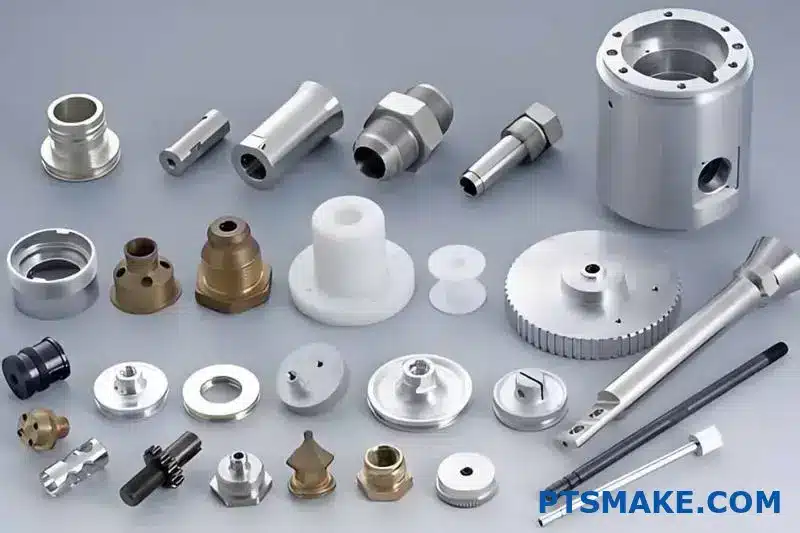
Common Materials Used in Metal CNC Machining
In my years working with precision manufacturing at PTSMAKE, I’ve come to appreciate how critical material selection is to the success of any CNC machining project. The right material can mean the difference between a part that performs flawlessly and one that fails prematurely.
Aluminum Alloys: The Versatile Performer
Aluminum alloys are among the most popular materials for CNC machining, and for good reason. These lightweight metals offer an impressive combination of properties that make them suitable for a wide range of applications.
The 6000 series (particularly 6061-T6) and 7000 series (like 7075-T6) are workhorses in the industry. 6061 offers good machinability, excellent corrosion resistance, and moderate strength, making it ideal for general-purpose applications. Meanwhile, 7075 provides superior strength comparable to many steels while maintaining the lightweight advantage of aluminum.
One aspect that makes aluminum particularly attractive is its excellent machinability rating3 – it cuts easily, produces good surface finishes, and causes less tool wear than harder materials. This translates to faster production times and lower machining costs.
Steel Varieties: When Strength and Durability Matter
Steel remains the backbone of manufacturing when applications demand strength, wear resistance, and durability. The variety of steel alloys available offers tremendous flexibility:
- Carbon Steels (1018, 1045): Offer good machinability and weldability at lower costs
- Alloy Steels (4130, 4140): Provide improved strength and hardness for more demanding applications
- Stainless Steels (303, 304, 316): Deliver excellent corrosion resistance alongside good mechanical properties
At PTSMAKE, we frequently work with 303 stainless steel when clients need a balance of corrosion resistance and machinability. The addition of sulfur to this alloy improves its cutting characteristics significantly compared to other stainless varieties.
Titanium: The High-Performance Option
When exceptional strength-to-weight ratio and corrosion resistance are non-negotiable, titanium alloys stand out. The aerospace, medical, and high-performance automotive sectors particularly value Ti-6Al-4V (Grade 5) for its remarkable properties.
However, titanium presents unique machining challenges:
- Low thermal conductivity leads to heat buildup
- Work hardening occurs during machining
- Tool wear happens much faster than with other materials
These factors make titanium approximately 5-10 times more expensive to machine than aluminum. At PTSMAKE, we’ve invested in specialized equipment and developed specific techniques to efficiently machine titanium components.
Copper Alloys: For Electrical and Thermal Applications
Copper and its alloys (brass, bronze) excel in applications requiring electrical conductivity, thermal transfer, or antimicrobial properties:
| Copper Alloy | Key Properties | Common Applications |
|---|---|---|
| Brass (C360) | Excellent machinability, moderate strength | Electrical components, decorative hardware |
| Bronze | Good wear resistance, low friction | Bearings, bushings, gears |
| Pure Copper | Superior electrical conductivity | Electrical connectors, heat sinks |
Criteria for Selecting the Right Material
Mechanical Requirements
When advising clients, I always start by understanding the mechanical demands of their application:
- Strength requirements: Will the part bear loads? Is fatigue strength important?
- Hardness needs: Will the component experience abrasion or impact?
- Flexibility considerations: Does the part need to flex or remain rigid?
For example, a structural aerospace component might require the high strength-to-weight ratio of 7075 aluminum or Ti-6Al-4V, while a decorative housing might be perfectly served by more economical 6061 aluminum.
Environmental Factors
The operating environment dramatically impacts material selection:
- Corrosion exposure: Parts exposed to moisture, chemicals, or salt air require materials with inherent corrosion resistance like stainless steel or may need protective treatments
- Temperature range: Materials perform differently at temperature extremes—what works at room temperature may fail in extreme heat or cold
- UV and weather exposure: Some applications require materials that won’t degrade with sun exposure
Economic Considerations
Budget realities always influence material choices. Consider these cost factors:
- Raw material costs: Titanium can cost 5-10 times more than aluminum
- Machining difficulty: Harder materials require more time, specialized tooling, and cause more tool wear
- Post-processing requirements: Some materials need heat treating, surface finishing, or other secondary operations
Material-Specific Machining Considerations
Surface Finish Capabilities
Different materials respond uniquely to machining processes, affecting the achievable surface finish:
- Aluminum: Can achieve excellent surface finishes (as fine as 0.8μm Ra) relatively easily
- Stainless Steel: Requires more careful approach to achieve fine finishes (typically 1.6μm Ra)
- Titanium: Presents challenges for fine finishing due to its poor thermal conductivity
Dimensional Tolerances
The material selection impacts the level of precision you can realistically achieve:
- Aluminum: Holds tight tolerances well (+/- 0.025mm) but has a higher thermal expansion coefficient
- Steel: Maintains dimensional stability during temperature fluctuations
- Copper alloys: Can be challenging for very precise work due to material softness
Industry-Specific Material Preferences
Having worked with clients across multiple sectors, I’ve observed distinct patterns in material preferences:
- Aerospace: Favors aluminum 7075, 2024, titanium alloys, and specialized steels
- Medical: Primarily uses 316L stainless steel, titanium, and medical-grade aluminum
- Automotive: Utilizes a mix of aluminum alloys, steels, and occasionally titanium for high-performance applications
- Electronics: Prefers aluminum for housings and copper alloys for conductive components
At PTSMAKE, we maintain inventory of these commonly requested materials to ensure faster turnaround times for our clients.
Cost Optimization Strategies for Metal CNC Machining Materials
Ever found yourself wincing at the material cost breakdown of your CNC machining project? Have you wondered why certain materials drive up your expenses so dramatically while others might be more economical choices for your application?
To optimize material costs in metal CNC machining projects, select appropriate materials based on actual performance needs rather than tradition, consider alternative materials with similar properties, and use material-efficient design principles. The right material choice can reduce costs by 20-30% without compromising quality.
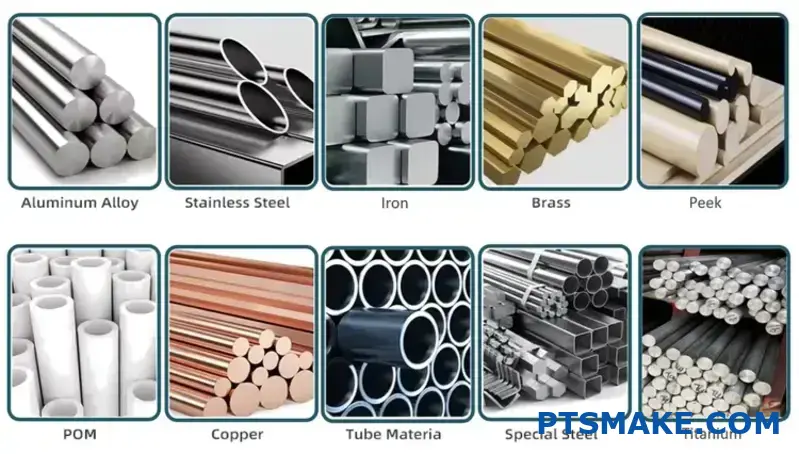
Understanding Material Cost Factors in CNC Machining
Material selection significantly impacts your overall project costs in metal CNC machining. The raw material can represent 40-60% of your total project expense, making it one of the most critical cost factors to optimize. Over my years working with clients at PTSMAKE, I’ve found that many engineers and designers overlook important considerations when selecting materials.
Key Cost Elements of Metal Materials
Material costs in CNC machining aren’t just about the price per pound or kilogram. Several factors contribute to the total material expense:
- Base material cost: The market price of the raw metal
- Machinability: How easily the material can be cut (affects machining time and tool wear)
- Material availability: Common materials are typically less expensive than specialty alloys
- Minimum order quantities: Some materials require larger purchases
- Scrap value: Some materials have better recycling value than others
Strategic Material Selection for Cost Reduction
One of the most effective strategies I recommend is selecting materials based on actual performance requirements rather than defaulting to what’s traditionally used. Many projects use unnecessarily expensive materials when more economical alternatives would perform adequately.
Material Cost Comparison Table
| Material | Relative Cost | Machinability | Key Properties | Common Applications |
|---|---|---|---|---|
| Aluminum 6061 | $ | Excellent | Lightweight, corrosion-resistant | Consumer products, fixtures |
| Aluminum 7075 | $$ | Good | High strength-to-weight ratio | Aerospace, high-stress parts |
| Brass | $$ | Excellent | Good electrical conductivity | Electrical components, decorative parts |
| Mild Steel | $ | Good | Affordable strength | Structural components, brackets |
| Stainless Steel 303 | $$ | Good | Corrosion resistance | Food processing equipment, medical |
| Stainless Steel 316 | $$$ | Moderate | Superior corrosion resistance | Marine applications, chemical equipment |
| Titanium | $$$$$ | Poor | Highest strength-to-weight ratio | Aerospace, medical implants |
Material Substitution Strategies
One approach I’ve successfully implemented with clients is finding cost-effective material substitutions. For example, a client was using titanium for a component that didn’t require its exceptional properties. By switching to 7075 aluminum with appropriate surface treatment, we reduced material costs by 65% while maintaining performance requirements.
When considering material substitutions, focus on:
- Actual mechanical requirements: Often specifications include unnecessary safety margins
- Environmental exposure: Sometimes less expensive materials with appropriate coatings work well
- Secondary operations: Heat treatment and surface finishing can enhance properties of less expensive base materials
- Material yield strength4: Carefully analyze if you’re over-engineering the part
Design Optimization for Material Efficiency
Beyond material selection, how you design your parts significantly impacts material costs. I recommend these design approaches:
Reduce Raw Material Volume
- Pocketing non-critical areas: Remove material where strength isn’t needed
- Optimizing wall thicknesses: Thin walls where possible reduces material usage
- Using ribs and gussets: Provides strength with less material than solid sections
- Near-net-shape design: Design parts to minimize material removal
Standardize Material Selection
Organizations often use different materials across similar projects unnecessarily. By standardizing on a smaller set of materials, you can:
- Negotiate better volume pricing with suppliers
- Reduce inventory carrying costs
- Minimize material changeovers in production
Advanced Material Cost-Saving Techniques
For more sophisticated cost optimization, consider these approaches:
Multi-material Designs
In some cases, combining materials can be cost-effective. For example, using aluminum for the main structure and steel inserts for high-wear areas can optimize both cost and performance.
Material Certifications and Requirements
Sometimes project specifications require expensive material certifications that may not be necessary. Review certification requirements to ensure you’re not paying for documentation you don’t need.
Lead Time Considerations
Material availability affects costs in less obvious ways. Readily available materials not only cost less but reduce lead times and inventory requirements. At PTSMAKE, we maintain stock of commonly used materials to help clients avoid rush charges and lengthy lead times.
By strategically approaching material selection and design, you can typically reduce material costs by 20-30% without compromising the quality or performance of your CNC machined parts. These material cost optimization strategies work best when implemented early in the design process rather than as afterthoughts.
What Industries Benefit Most From Metal CNC Machining?
Have you ever wondered why some industries seem to dominate the metal CNC machining market? Or perhaps you’ve struggled to determine if your specific sector could truly benefit from precision machining technologies? The competition for advanced manufacturing resources is intense, and knowing where your industry stands can be crucial.
Metal CNC machining delivers exceptional value to aerospace, automotive, medical, electronics, defense, and energy sectors through its unmatched precision, material versatility, and ability to produce complex geometries. These industries depend on high-performance components that meet strict regulatory requirements while maintaining operational reliability.

Aerospace: Where Precision Meets Safety
The aerospace industry represents perhaps the most demanding application for metal CNC machining. When I work with aerospace clients at PTSMAKE, I’m always struck by their exacting requirements.
Critical Aerospace Applications
Aerospace components must perform flawlessly under extreme conditions while maintaining the lightest possible weight. This paradoxical requirement makes CNC machining indispensable for producing:
- Turbine blades with complex airfoil geometries
- Lightweight structural components with optimized material distribution
- Fuel system components requiring absolute precision
- Landing gear components that must withstand enormous stress cycles
The ability to machine titanium alloys5 and other specialized aerospace materials with tight tolerances (often ±0.0005 inches) makes CNC machining irreplaceable in this sector. Furthermore, aerospace certifications like AS9100 demand comprehensive documentation of manufacturing processes—something modern CNC systems excel at providing.
Medical: Life-Saving Precision
The medical device industry benefits tremendously from metal CNC machining capabilities. I’ve seen firsthand how precision-machined components enable groundbreaking medical technologies.
Medical Component Requirements
Medical implants and surgical instruments demand:
- Biocompatibility (often requiring specialized alloys like titanium or medical-grade stainless steel)
- Extremely precise features for proper fit and function
- Surface finishes that meet specific biological response requirements
- Consistent quality to meet FDA and other regulatory standards
Orthopedic implants represent an excellent example of CNC machining’s value. These components must perfectly match human anatomy while providing structural integrity for years of use within the human body. The tolerances involved are measured in microns, not millimeters.
Automotive: Performance and Scalability
The automotive industry utilizes metal CNC machining for both prototype development and production components. This sector particularly values the flexibility CNC offers.
Automotive Applications Table
| Component Type | Key Requirements | Benefits of CNC Machining |
|---|---|---|
| Engine Components | Heat resistance, precise tolerances | Ability to machine hardened materials, consistent quality |
| Performance Parts | Complex geometries, weight optimization | Design freedom, material selection flexibility |
| Prototype Parts | Rapid turnaround, design iteration | No tooling costs for small runs, easy modifications |
| Fixture & Tooling | Durability, precision | Long service life, perfect fit with mating components |
In high-performance automotive applications, components like custom cylinder heads or specialized drivetrain parts benefit immensely from CNC machining’s ability to produce complex internal passages and precise mating surfaces.
Defense and Military: Reliability Under Pressure
Defense applications represent another sector where the benefits of metal CNC machining are substantial. Military equipment must function flawlessly in extreme conditions.
Military-Grade Requirements
Defense components typically require:
- Enhanced durability in harsh environments
- Precision that ensures weapon system accuracy
- Traceability for each component’s manufacturing history
- The ability to machine exotic, high-performance alloys
I’ve worked on defense projects where components needed to withstand extreme temperature variations while maintaining precise tolerances—a perfect application for CNC machining’s capabilities.
Electronics and Telecommunications: Miniaturization Masters
The electronics industry increasingly relies on metal CNC machining for both prototypes and production parts. As electronic devices become more compact, the housings and structural components require greater precision.
Electronic Enclosure Considerations
Modern electronics demand:
- Thermal management features (heat sinks, ventilation patterns)
- EMI/RFI shielding capabilities
- Precise mounting points for circuit boards and components
- Aesthetic finishes for consumer products
At PTSMAKE, we’ve seen growing demand for aluminum enclosures with complex internal features that can only be economically produced through CNC machining.
Energy Sector: Durability Meets Efficiency
Oil, gas, renewable energy, and power generation all benefit significantly from metal CNC machined components. These industries operate equipment under some of the most challenging conditions imaginable.
Energy Application Highlights
- Downhole drilling components requiring exotic alloys and extreme durability
- Wind turbine components with complex geometries for optimal efficiency
- Nuclear industry parts with zero-defect tolerance requirements
- Solar tracking system components requiring weather resistance and precision
The common thread across these industries is the need for uncompromising quality. When component failure could mean environmental disaster or power outages affecting thousands, the precision and reliability of CNC machining become invaluable.
Metal CNC Machining vs. 3D Printing: Market Trends and Future Outlook?
Have you ever wondered which manufacturing technology is growing faster? While both metal CNC machining and 3D printing are evolving rapidly, the decision about which to invest in can be overwhelming. The market trends are shifting, and staying ahead means understanding not just today’s capabilities, but tomorrow’s potential.
Metal CNC machining and 3D printing markets are developing at different rates, with additive manufacturing growing at roughly 20% annually compared to CNC’s steady 5-7%. However, CNC machining still dominates in market size, with global value exceeding $80 billion compared to metal 3D printing’s $10 billion.
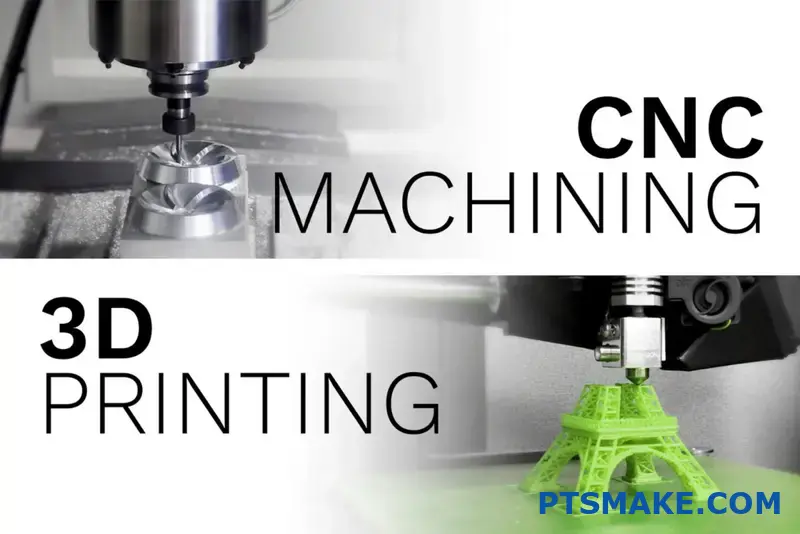
The Current Manufacturing Technology Landscape
The manufacturing technology market is experiencing fascinating shifts as both metal CNC machining and 3D printing evolve along different trajectories. Throughout my experience working with manufacturing technologies at PTSMAKE, I’ve observed these trends firsthand and helped clients navigate this changing landscape.
Traditional CNC machining remains the cornerstone of metal manufacturing, maintaining its position as the dominant production method with approximately $83 billion in global market value. This mature technology continues to grow steadily at 5-7% annually, driven by ongoing innovations in automation, multi-axis capabilities, and smart manufacturing integration.
In contrast, metal 3D printing represents a more dynamic market segment. While smaller in absolute size (approximately $10-12 billion globally), it’s experiencing much faster growth at 15-25% annually. This rapid expansion is fueled by continuous innovations in materials, process reliability, and decreasing equipment costs.
Industry Adoption Patterns
Different industries are adopting these technologies at varying rates, which creates interesting patterns in the overall market:
Aerospace Leading the Way
The aerospace industry has become the early adopter6 for metal additive manufacturing, particularly for complex components like fuel nozzles, turbine blades, and structural brackets. The ability to reduce weight while maintaining strength provides compelling advantages for flight applications. At PTSMAKE, we’ve manufactured numerous aerospace components using both technologies, allowing me to witness this transformation directly.
Automotive’s Balanced Approach
The automotive sector shows a more balanced approach. While high-volume production still heavily relies on traditional CNC machining (where we provide numerous precision components to automotive clients), 3D printing is gaining traction for specialized applications like customized tooling, jigs, and fixtures. Performance racing teams particularly appreciate the design freedom of additive manufacturing for specialized parts.
Medical’s Personalization Revolution
Medical manufacturing presents one of the most interesting adoption patterns. The ability to create patient-specific implants and surgical guides has revolutionized certain medical procedures. However, the strict regulatory requirements mean that traditional CNC machining remains essential for many standardized medical components where established validation processes are already in place.
Investment Trends and Capital Expenditures
When examining market trends, capital investments tell an important story:
| Technology | Initial Investment | Operational Costs | ROI Timeline | Market Growth |
|---|---|---|---|---|
| CNC Machining | $100K-$500K+ | Moderate-High | 2-5 years | 5-7% annually |
| Metal 3D Printing | $200K-$1M+ | High | 3-7 years | 15-25% annually |
The investment patterns reveal interesting dynamics. Traditional metal fabrication companies are increasingly adding additive capabilities to their existing CNC operations rather than replacing them entirely. This hybrid approach allows manufacturers to leverage the strengths of both technologies.
Material Market Developments
The materials market supporting these technologies is evolving in fascinating ways:
CNC Material Trends
For CNC machining, we’re seeing increased demand for:
- High-performance alloys (titanium, Inconel, specialized stainless steels)
- Sustainable and recyclable materials
- Precision-engineered raw stock with improved consistency
3D Printing Material Evolution
The metal powder market for additive manufacturing is experiencing:
- Rapidly expanding material options (now exceeding 80 commercial metal alloys)
- Decreasing costs as production scales up (though still premium-priced)
- Improved quality standards and certification processes
At PTSMAKE, we’ve expanded our material offerings to accommodate these trends, ensuring our clients have access to cutting-edge options regardless of which manufacturing method they choose.
Future Technology Convergence
Perhaps the most interesting market trend is the increasing convergence between these technologies. We’re witnessing hybrid machines that combine additive and subtractive processes, allowing parts to be 3D printed and then precision-finished with CNC operations in a single setup.
This convergence represents the future of metal manufacturing – not an either/or proposition, but rather an integrated approach that leverages the strengths of each technology. The market is responding with increased investment in these hybrid solutions, which I believe will define the next generation of metal fabrication.
Regional Market Variations
The adoption of these technologies varies significantly by region:
- North America and Europe lead in both technologies but show stronger investment in metal 3D printing research and development
- Asia (particularly China) dominates in traditional CNC machine production but is rapidly scaling up additive manufacturing capabilities
- Emerging markets typically focus on established CNC technology before expanding into additive manufacturing
These regional variations create interesting opportunities for global manufacturing companies like PTSMAKE that can leverage different capabilities across regions.
What Surface Finishes Are Available For CNC Machined Metal Parts?
Ever struggled with choosing the right surface finish for your metal parts? The overwhelming number of options can leave you second-guessing your decisions, potentially compromising both aesthetics and functionality of your final product.
Surface finishes for CNC machined metal parts include bead blasting, anodizing, powder coating, brushing, polishing, plating, black oxide, and passivation. Each finish offers unique advantages for appearance, corrosion resistance, and functionality depending on your specific application requirements.
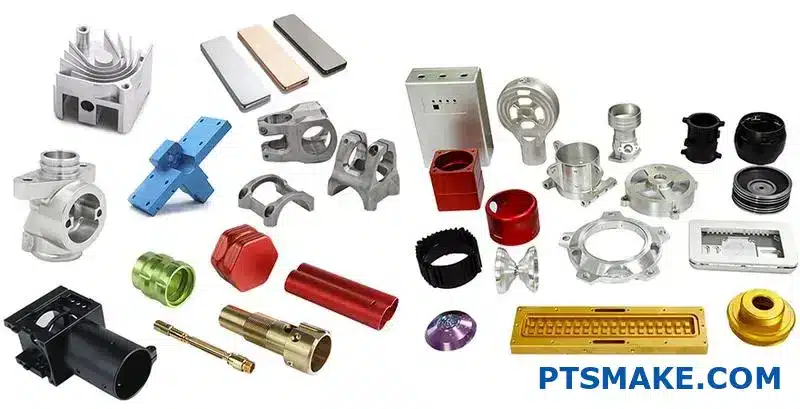
Common Surface Finishes for Metal CNC Machined Parts
When it comes to metal CNC machined parts, the surface finish is much more than just aesthetics. It directly impacts functionality, durability, and even manufacturing costs. Through my experience at PTSMAKE, I’ve found that selecting the right finish requires balancing technical requirements with practical considerations.
Mechanical Finishes
Mechanical finishes alter the surface through physical means, changing both appearance and properties.
Bead Blasting
Bead blasting creates a uniform matte finish by propelling small glass or ceramic beads against the metal surface under high pressure. This process:
- Removes machining marks and minor imperfections
- Creates a consistent, non-reflective surface
- Improves paint adhesion for subsequent finishing
- Works particularly well with aluminum and stainless steel parts
We often recommend bead blasting for parts that need a professional, non-distracting appearance without the higher cost of polishing.
Brushing/Brushed Finish
A brushed finish involves using abrasive belts or wheels to create fine, parallel lines on the metal surface. This produces:
- A distinctive directional pattern
- Reduced light reflection compared to polished surfaces
- Good fingerprint and scratch concealment
- An industrial, modern aesthetic
Electronics enclosures and architectural components frequently benefit from brushed finishes due to their balance of visual appeal and practicality.
Polishing
Polishing uses progressively finer abrasives to create a mirror-like finish. The process can achieve several levels of refinement:
| Polish Grade | Description | Typical Applications |
|---|---|---|
| Matte Polish | Smooth but not reflective | Industrial components, machine parts |
| Semi-Bright Polish | Moderate reflectivity | Consumer products, medical devices |
| Mirror Polish | Highly reflective | Luxury goods, optical components |
Polishing is labor-intensive and increases costs, but delivers unmatched surface reflectivity7 for applications where aesthetics are paramount.
Chemical Finishes
Chemical processes alter both the surface appearance and material properties of metals.
Anodizing (for Aluminum)
Anodizing creates a hard oxide layer on aluminum through an electrochemical process. Key benefits include:
- Enhanced corrosion and wear resistance
- Ability to add vibrant, durable colors
- Electrical insulation properties
- Non-conductive surface layer
At PTSMAKE, we offer Type II and Type III (hard) anodizing with various color options. Type III provides superior hardness but limits color selection to black or natural.
Black Oxide (for Steel)
Black oxide creates a black surface conversion coating that:
- Provides mild corrosion resistance
- Maintains dimensional accuracy (adds minimal thickness)
- Reduces light reflection
- Improves oil retention for moving parts
This cost-effective finish is ideal for internal components where appearance is secondary to light corrosion protection.
Passivation (for Stainless Steel)
Passivation removes free iron from the surface of stainless steel, enhancing its natural corrosion resistance by:
- Creating a protective oxide layer
- Preventing rust formation
- Preserving the natural appearance
- Meeting regulatory requirements for medical and food applications
Applied Coatings
Applied coatings add material layers to the base metal for enhanced properties.
Powder Coating
Powder coating applies electrostatically charged powder particles that are then cured with heat. This process delivers:
- Excellent durability and impact resistance
- Thick, uniform coverage
- Wide color and texture options
- Superior environmental resistance
For outdoor equipment and consumer products, powder coating offers exceptional protection with aesthetic versatility.
Plating (Nickel, Chrome, Zinc)
Metal plating deposits a thin layer of another metal onto the base material:
| Plating Type | Key Benefits | Common Applications |
|---|---|---|
| Nickel | Corrosion resistance, hardness | Industrial components, decorative hardware |
| Chrome | Wear resistance, low friction | Automotive parts, hydraulic components |
| Zinc | Sacrificial corrosion protection | Fasteners, outdoor equipment |
Selecting the Right Surface Finish
The optimal surface finish depends on several factors:
- Environment: Will the part be exposed to moisture, chemicals, or UV light?
- Functionality: Does the surface need specific friction, electrical, or thermal properties?
- Aesthetic requirements: Is appearance critical to the application?
- Budget constraints: Some finishes significantly impact overall part cost
- Regulatory compliance: Medical and food applications have strict finishing requirements
I always advise my clients to consider the entire product lifecycle when selecting a finish. An automotive component requiring exceptional corrosion resistance might justify the cost of nickel plating, while an internal bracket might need only black oxide treatment.
At PTSMAKE, we provide consultation on finish selection based on your specific application requirements, helping you balance performance needs with production budgets. The right finish not only enhances your part’s appearance but can dramatically extend its service life and functionality.
Evaluating The Supplier’s Track Record: Reputation And Experience?
Have you ever invested time and resources into a CNC machining project, only to be disappointed by subpar quality, missed deadlines, or unexpected costs? The frustration of realizing you’ve partnered with the wrong supplier can set your project back weeks or even months.
When evaluating metal CNC machining suppliers, their track record speaks volumes about their reliability. Look for suppliers with extensive industry experience, positive client testimonials, and a portfolio of successfully completed projects similar to yours. Their history often predicts your future satisfaction.

The Importance of Supplier History
A supplier’s track record is one of the most telling indicators of their capability to deliver on promises. In my work at PTSMAKE, I’ve noticed that clients who thoroughly investigate a supplier’s history before committing tend to experience smoother projects with fewer complications.
Years in Business
The longevity of a CNC machining supplier in the industry often correlates with their stability and expertise. Companies that have weathered economic fluctuations and industry changes typically have:
- Refined their production processes
- Developed problem-solving capabilities
- Built stable supply chains
- Accumulated technical knowledge
However, don’t dismiss newer companies completely. Some younger suppliers might bring innovation and flexibility that established players sometimes lack. What’s crucial is examining their leadership team’s experience and their growth trajectory since establishment.
Client Portfolio Analysis
Reviewing a supplier’s client base provides insight into their capabilities and industry focus. When evaluating a potential metal CNC machining partner, ask:
- Do they serve clients in your specific industry?
- Have they worked with companies of similar size to yours?
- Can they handle projects with comparable complexity?
A supplier with experience in your industry will understand your specific requirements, regulatory concerns, and quality standards. At PTSMAKE, our diverse client portfolio spanning aerospace, automotive, and medical industries has equipped us with versatile capabilities that translate across sectors.
Reputation Management
Client Testimonials and Reviews
Client feedback offers unfiltered insights into a supplier’s performance. Look beyond the testimonials featured on the supplier’s website and search for:
- Independent review platforms
- Industry forums
- Social media feedback
- Case studies with measurable outcomes
Pay special attention to how the supplier responds to negative feedback. A company that addresses concerns professionally demonstrates commitment to improvement and customer satisfaction.
Industry Recognition
Awards, certifications, and industry recognition can provide objective validation of a supplier’s capabilities. Look for:
- ISO certifications (especially ISO 9001)
- Industry-specific certifications
- Quality awards
- Recognition from industry associations
These credentials indicate a supplier’s commitment to maintaining industry standards and continuously improving their processes.
Technical Expertise Evaluation
The technical proficiency8 of a CNC machining supplier directly impacts the quality of your parts. Evaluate their expertise through:
Material Experience
Different metals require specific machining approaches. Ask potential suppliers about their experience with the exact materials your project requires. A comprehensive supplier should be able to work with:
| Material Category | Examples | Special Considerations |
|---|---|---|
| Aluminum Alloys | 6061, 7075 | Heat treatment, surface finish |
| Stainless Steel | 303, 304, 316 | Work hardening, tool wear |
| Tool Steel | A2, D2, H13 | Hardness, dimensional stability |
| Copper Alloys | C360, C110 | Thermal properties, chip control |
| Titanium | Grade 5 (Ti-6Al-4V) | Heat management, tool selection |
Equipment and Technology
A supplier’s machinery and technology directly impact their capabilities. During my visits to potential partners, I always assess:
- Age and condition of CNC machines
- Types of machines (3-axis, 5-axis, multi-axis)
- CAD/CAM software capabilities
- Quality control equipment
- Automation level
Modern equipment typically translates to better precision, consistency, and efficiency. However, well-maintained older machines operated by skilled machinists can still deliver excellent results.
Problem-Solving Capability
How a supplier handles challenges reveals much about their professionalism and expertise. Ask about:
- Past project complications and their resolutions
- Design improvement suggestions they’ve made
- Quality issues they’ve encountered and overcome
- Their approach to urgent timeline requirements
Suppliers who can provide specific examples of problem-solving demonstrate experience and transparency. At PTSMAKE, we maintain detailed case studies of challenging projects that showcase our engineering team’s problem-solving approach.
Communication Practices
Effective communication often distinguishes exceptional suppliers from merely adequate ones. Evaluate:
- Response time to inquiries
- Clarity of information provided
- Willingness to explain technical details
- Availability of technical staff for consultations
- Communication tools and project management systems
A supplier who communicates proactively and clearly during the quoting process will likely maintain that standard throughout your project. This transparency reduces misunderstandings and helps prevent costly errors.
Remember that evaluating a supplier’s track record requires balancing quantitative metrics with qualitative assessments. The ideal metal CNC machining partner combines technical expertise with reliability and professional integrity – qualities that become evident through thorough evaluation of their history and reputation.
What Design Considerations Prevent Errors In Metal CNC Machining?
Have you ever received CNC machined parts that didn’t fit your assembly? Or watched a promising prototype fail because of imperceptible machining errors? The frustration of wasted materials, blown budgets, and missed deadlines can turn a straightforward metal machining project into a costly nightmare.
Preventing errors in metal CNC machining requires thoughtful design considerations including appropriate tolerances, uniform wall thicknesses, avoiding sharp internal corners, designing for proper tool access, and considering material properties. These design elements minimize issues before they reach the production floor.

Understanding the Impact of Design on Error Prevention
When it comes to metal CNC machining, design isn’t just about aesthetics or functionality—it’s your first line of defense against manufacturing errors. Over my years working with precision manufacturing at PTSMAKE, I’ve observed that roughly 70% of machining problems can be traced back to design issues rather than machine or operator error.
The relationship between design and error prevention is straightforward: a part designed with manufacturing constraints in mind will encounter fewer problems during production. This concept, known as Design for Manufacturability9, represents a proactive approach rather than reactive troubleshooting after problems occur.
Critical Tolerance Considerations
Specifying Appropriate Tolerances
One of the most common mistakes I see is over-specifying tolerances. While it might seem safer to request the tightest possible tolerances for all dimensions, this approach dramatically increases costs and production time.
I recommend using a tiered approach to tolerances:
- ±0.005" (±0.127mm) for general dimensions
- ±0.002" (±0.0508mm) for mating surfaces
- ±0.0005" (±0.0127mm) only when absolutely necessary
At PTSMAKE, we’ve found that carefully analyzing which surfaces truly require tight tolerances can reduce machining costs by 15-30% without compromising functionality.
Datum Selection and GD&T Implementation
Proper datum selection forms the foundation of accurate machining. When designing your part, consider:
- Which surfaces will contact other components?
- What’s the most stable orientation for machining?
- How will the part be measured for quality control?
Geometric Dimensioning and Tolerancing (GD&T) provides a systematic approach to communicating complex design requirements. While it requires more upfront design effort, it results in fewer interpretation errors during manufacturing.
Geometric Design Features That Reduce Errors
Wall Thickness and Rigidity
Maintaining uniform wall thickness throughout your design reduces warping and simplifies machining. For aluminum parts, I typically recommend a minimum thickness of 0.040" (1mm), while steel can go thinner to about 0.030" (0.75mm) depending on the application.
When designing thin-walled features, consider adding supporting ribs rather than reducing wall thickness. This maintains structural integrity while keeping material removal efficient.
Corner and Edge Design
Sharp internal corners are nearly impossible to machine with standard end mills and create stress concentration points. Instead, design with these guidelines:
| Corner Type | Recommended Approach | Benefits |
|---|---|---|
| Internal Corners | Minimum 1/3 of pocket depth radius | Reduces tool stress, prevents corner cracks |
| External Corners | Can be sharp or radiused | Sharp corners possible but may need secondary operations |
| Edges | Slight chamfer or radius | Prevents burrs and handling injuries |
Machining Access and Fixturing Considerations
Always design with tool access in mind. Deep pockets with small openings create challenges for both tool reach and chip evacuation. When possible, design parts to be machined from standard stock sizes without complex fixtures.
For complex parts at PTSMAKE, we analyze each design using CAM simulation to identify potential access issues before cutting begins.
Material Selection for Error Reduction
The material you select significantly impacts machining error rates. Materials with inconsistent properties or those prone to movement during machining introduce variables that can lead to errors.
Free-machining grades of common metals typically include:
- Aluminum: 6061-T6, 7075-T6
- Steel: 1018, 4140
- Stainless Steel: 303, 304
For prototypes that will eventually be mass-produced, I always recommend using the same material for both stages. This prevents unexpected behavior when transitioning to production.
Draft Angles and Feature Orientation
While draft angles are more commonly associated with molding processes, they can benefit certain CNC machined features as well. Slight draft angles on deep features can:
- Improve surface finish
- Reduce tool wear
- Allow faster machining speeds
When designing complex parts, consider the orientation that minimizes the number of setups needed. Each reorientation introduces potential alignment errors.
Design Documentation and Communication
Clear communication prevents errors before machining begins. I’ve found comprehensive design documentation should include:
- Complete 3D models with manufacturing annotations
- Critical tolerance callouts highlighted separately
- Material specifications including grade and condition
- Surface finish requirements by area
- Any post-machining requirements (heat treatment, coatings, etc.)
At PTSMAKE, we emphasize design review meetings between engineers and machinists to catch potential issues early in the process.
How To Maintain Tight Tolerances In Metal CNC Machining?
Have you ever received parts that looked perfect but failed during assembly because they were off by just a few thousandths of an inch? Or watched a promising project derail because metal components didn’t fit together properly, despite your explicit tolerance requirements?
Maintaining tight tolerances in metal CNC machining requires a comprehensive approach: using premium cutting tools, implementing proper fixturing, controlling thermal variables, selecting appropriate machining strategies, employing regular inspection, and ensuring machine calibration and maintenance. With these practices, even micron-level precision becomes consistently achievable.
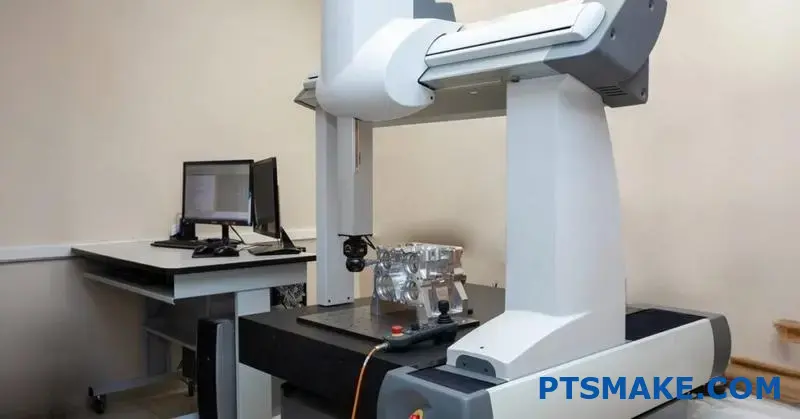
Understanding Tolerance Control Factors
Achieving and maintaining tight tolerances in metal CNC machining isn’t just about having good equipment or skilled operators—it’s about managing a complex system of interrelated factors. In my experience working with precision components for aerospace and medical device clients at PTSMAKE, I’ve found that understanding these underlying factors is crucial.
Machine Rigidity and Stability
Machine rigidity directly impacts your ability to hold tight tolerances. CNC machines with robust construction and proper dampening systems minimize vibration during cutting operations. This becomes especially critical when machining hardened metals or when taking deep cuts.
When selecting machines for tight-tolerance work, I look for:
- Solid cast iron bases with proper reinforcement
- Linear guideways with minimal deflection
- Temperature-controlled spindle systems
- Precision ball screws with minimal backlash
At our facility, we use machines with thermal compensation systems that adjust for minute expansions during operation, helping us maintain volumetric accuracy10 even during extended machining cycles.
Tooling Selection and Management
The cutting tools you select dramatically influence tolerance capabilities. For maintaining tolerances below ±0.001" (0.025mm), I recommend:
- Premium carbide or ceramic tools for critical features
- Tool holders with minimal runout (<0.0002")
- Implementing tool wear monitoring systems
- Regular tool inspection and replacement schedules
Tool deflection remains one of the most overlooked causes of tolerance issues. Even the best-quality tool will deflect under cutting forces, especially in longer reach applications. We calculate expected deflection beforehand and adjust cutting parameters or tool selection accordingly.
Workholding and Fixturing Techniques
Proper workholding eliminates movement during machining and ensures part datum surfaces remain consistent throughout operations. For critical components, consider:
| Workholding Method | Best Applications | Tolerance Capability |
|---|---|---|
| Vacuum fixturing | Thin, flat workpieces | ±0.001" |
| Hydraulic clamping | Heavy material removal | ±0.0005" |
| Custom fixtures | Complex geometries | ±0.0003" |
| Magnetic workholding | Ferrous materials, quick setups | ±0.001" |
When machining complex parts, we often create dedicated fixtures that reference primary datums and provide repeatable locating. These fixtures might seem expensive initially, but they quickly pay for themselves through reduced setup time and improved consistency.
Process Controls for Tight Tolerances
Temperature Management
Temperature variation is the silent killer of tight tolerances. A 1°C change in temperature can cause a 10μm expansion in a 1-meter aluminum workpiece. To mitigate this:
- Keep machine shop temperature controlled within ±1°C
- Allow materials to acclimate to shop temperature before machining
- Consider thermal stabilization periods for critical components
- Implement in-process temperature monitoring for extended operations
I’ve seen projects fail because perfectly machined parts were measured immediately after machining, while still warm from cutting operations. Establishing consistent measurement protocols at standardized temperatures is essential.
Cutting Strategy Optimization
When programming for tight tolerances, your cutting strategy matters significantly:
- Progressive machining approaches (rough, semi-finish, finish passes)
- Consistent chip loads to minimize tool deflection
- Climb milling for final passes to reduce burrs and improve finish
- Tool path optimization to manage heat buildup
For particularly demanding features, we’ll often program dedicated finishing operations with fresh tools, lighter cuts, and optimized speeds and feeds specifically calibrated for the material properties.
In-Process Measurement and Feedback
For the tightest tolerance work, implementing in-process measurement provides real-time feedback:
- On-machine probing between operations
- SPC (Statistical Process Control) sampling during production runs
- Automated offset adjustments based on measurement trends
- Environmental monitoring during critical operations
These systems allow us to identify and correct drift before it results in out-of-tolerance conditions, saving significant rework costs and maintaining delivery schedules.
Practical Implementation Tips
From my perspective, maintaining tight tolerances consistently requires discipline in these additional areas:
- Machine calibration schedules: Implement regular geometric accuracy verification using laser interferometry or similar precision measurement technologies.
- Material selection considerations: Some materials maintain dimensional stability better than others. Stress-relieved or aged materials often hold tighter tolerances.
- Operator training: Even with the best equipment, skilled operators who understand tolerance relationships make better decisions during setup and production.
- Documentation rigor: Maintain detailed records of successful setups, including cutting parameters, fixturing details, and environmental conditions.
Remember that metal CNC machining is a dynamic process where countless variables interact. At PTSMAKE, we take a systems approach to tolerance control, addressing all factors rather than focusing on just machine capabilities or operator skill alone.
By implementing these practices consistently, we routinely achieve tolerances of ±0.0005" (0.0127mm) on critical features, with capabilities down to ±0.0002" (0.005mm) for specialized applications. This systematic approach has allowed us to serve demanding industries like aerospace, medical devices, and precision robotics where component accuracy directly impacts product performance and safety.
Click here to learn how recent trade policies affect CNC machining costs and what strategies can minimize their impact. ↩
Learn how surface analysis technology ensures perfect metal finishes for critical applications. ↩
Technical term explaining how easily a material can be cut during machining operations. ↩
Click to learn about optimal material strength calculations for different applications. ↩
Learn more about specialized aerospace materials for critical applications. ↩
Technical term for companies that embrace new technologies first. ↩
Learn how reflectivity affects both aesthetics and functional performance in precision components. ↩
Click to learn about technical requirements for precision machining projects. ↩
Get practical manufacturability guidelines to reduce production costs and errors. ↩
Learn how this critical factor affects your part precision and quality. ↩


